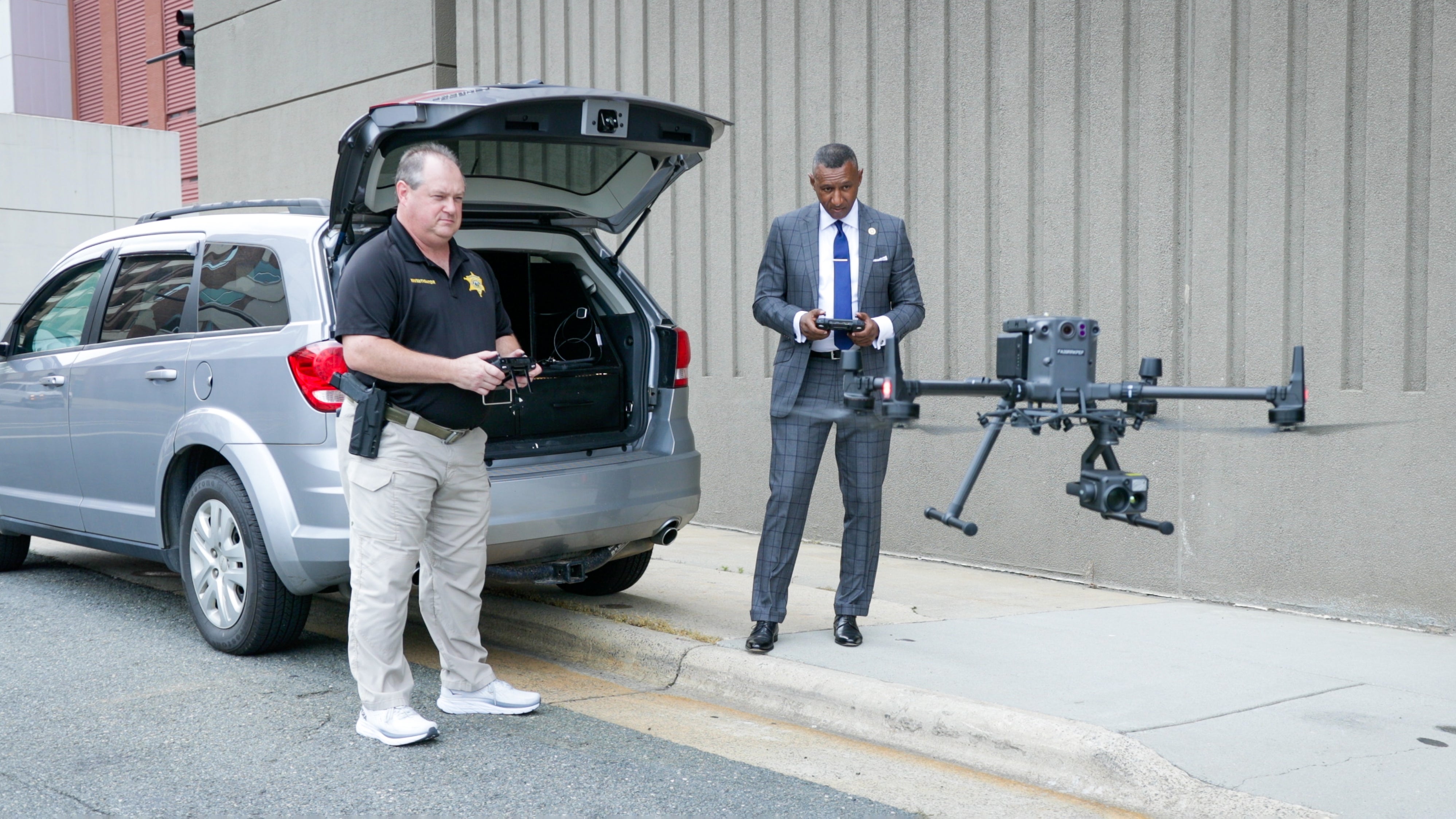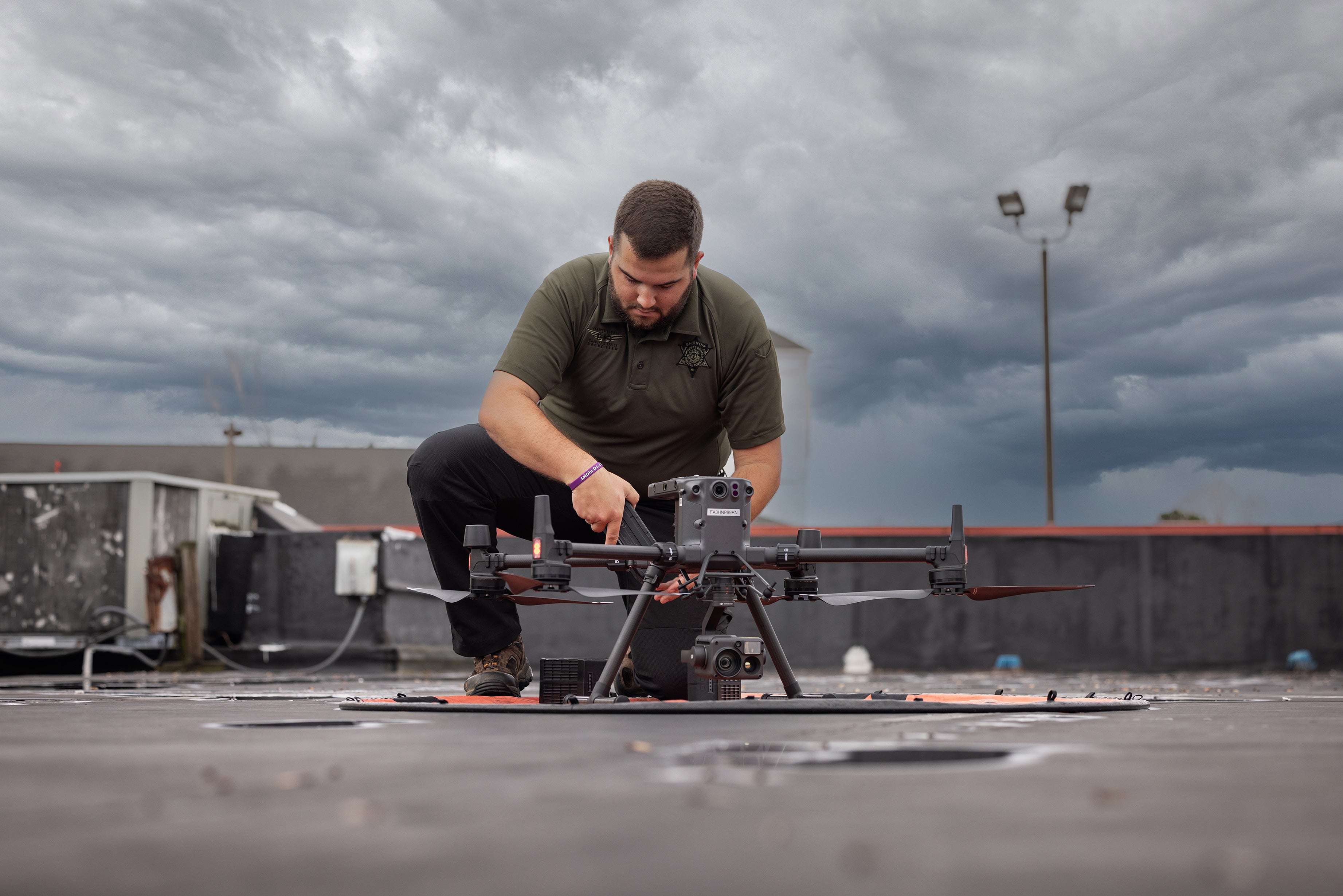Still no final agreement on drone program: Clemmons continues to wait on requested information from Forsyth Sheriff’s Office
Published 12:10 am Thursday, August 3, 2023
|
Getting your Trinity Audio player ready...
|
CLEMMONS — When Clemmons was targeted by the Forsyth County Sheriff’s Office last year as the first choice for a Drone as First Responder Program, both sides agreed that it was a great idea.
Nothing has changed since that time when the pilot program became live in October, and it has been met with positive feedback and results ever since.
However, the approval of the 2023-2024 fiscal year budget for the village came on June 12 with one omission. It didn’t include the drone program.
In the previous council meeting in May, the council approved an interlocal agreement with the Forsyth County Sheriff’s Office for the approaching fiscal year, but that didn’t include the drone program for which Village Manager Mike Gunnell said he was still waiting to receive information — and that it would be handled as a separate item going forward at that point.
After the June meeting, Gunnell said again he still had not received any of the requested information, “however, they did contact us to let us know they are working on it.”
When asked after last week’s council meeting on July 24, Gunnell said the village still hadn’t received anything.
A spokesperson for the Forsyth County Sheriff’s Office, after checking on any internal updates, said: “To my knowledge, the requested information has not been formally presented to the council, thus, the interlocal agreement is currently in a holding pattern.”
So obviously, there’s some work left to resolve the matter.
The estimated annual cost for the standard agreement with the FSCO — not including the drone program — came to $2,116,050, with $2,075,490 payable by Clemmons in four equal installments from Oct. 15, 2023, to July 15, 2024. Numbers for the fiscal year 2022-2023 were budgeted at $1,951,480, with an estimated actual total of $2,001,280.
Forsyth County Sheriff Bobby Kimbrough came to the April 24 council meeting to check in with the board regarding the Drone as a First Responder program, which was the first of its kind in the state and one of only 11 programs with the applicable Federal Aviation Administration waivers nationwide when it was introduced in Clemmons last year.
In addition to Kimbrough’s appearance, the council received a breakdown of the financials for the program with a draft exhibit showing a total annual cost for fiscal year 2023-2024 of $119,450 with total direct costs of $108,980 and an administrative fee of $10,470.
Kimbrough said he wanted to see if there were any questions as to “what we’re doing, how we’re doing and what is the future of it” in advance of a budget workshop before the last council meeting on May 8.
The council had noted “all the successes” in the early months as data was collected and looking ahead to see what the costs would be if the pilot program, which was designed to provide deputies with additional support for daily operations utilizing unmanned aircraft systems, was implemented.
Clemmons was selected as the location for the DFR pilot program because the area has the highest population density and call volume of the townships contracted with the Sheriff’s Office to provide law enforcement services.
The FSCO provided numbers last week for the drone program in Clemmons, stating there have been 227 flights in response to calls for service since Jan. 1 and also offered a couple of examples of successful outcomes:
• “Recently, Ulta employees called in to report shoplifters who were leaving the store, and the drone arrived and was able to give visual information to the responding deputy, who was able to successfully locate and apprehend the suspects.
• “On another call regarding a missing person with special needs, the drone was able to identify the individual walking in a roadway. Deputies were able to quickly respond and ensure the individual’s safe return to their residence.”
When the drone program was first introduced, Mayor Pro Tem Michelle Barson said there were many positives to consider.
“The first is improved service to our residents with quicker response times,” she said. “The drones can get to a scene of a call in a fraction of the time that an officer can, with times ranging from one minute to three minutes. DFR is a de-escalation tool that saves lives by providing eyes on the scene prior to an officer arriving there. This means they know what they are walking into and how to properly prepare.
“Another reason comes down to cost. It has become increasingly difficult to recruit and retain officers, and Clemmons continues to need more of them. I believe that looking down the road, five or 10 years, that we will be able to slow our bringing on of new officers and detectives thanks to our adoption of drones being part of the force.”
After an overall update report in a meeting late in 2022, council member Mike Combest said: “Sixteen percent of the drone deployments resulted in a deputy in a car not having to go there. So those folks are available for other things. That is powerful, especially as we grow. A 16 percent increase in your deputy capability on the ground is awesome.”
Council member Mary Cameron said that this program is truly a first responder.
“The thing that struck me when I read all of these reports is the very first line every time said the drone arrived first or the drone arrived before…” Cameron said. “I see that as being a real timesaver. I don’t see any negatives.”
Kimbrough said in the April council meeting that he was excited the village allowed the FCSO to launch the program here with the capability of the drones to advance the critical response times.
“Clemmons has grown drastically in the 10 years from when I first got here,” Kimbrough said. “As we grow, things are happening in Clemmons that never have happened before. That’s because the population is growing here, and the people are coming. Clemmons is not the quiet, sleepy place that it once was.”
Not long after the council meeting in May 2022, when the drone program was first introduced,
Barson said she and Combest attended a county commissioners’ briefing.
“They wanted to know about our support and asked a few questions of us,” she said. “The biggest question and concern was the same as ours — budget. What does this look like in the short-term budget-wise and the long-term budget-wise? Where does the money come from?”
That question, and whatever other information is involved, remains on the table.





